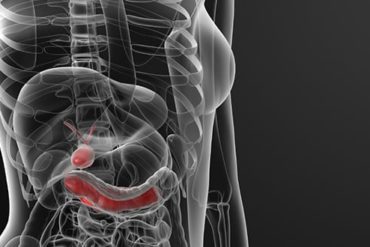Lactose intolerance is the inability to digest lactose, the natural sugar found in milk and other dairy products. Lactose is a combination of the sugars glucose and galactose.
Lactose intolerance occurs when not enough of the enzyme lactase is produced in the lining of the small intestines. Despite common misunderstanding, lactose intolerance is not an allergy.
Symptoms
The symptoms of lactose intolerance are usually prevalent a few hours after consuming lactose in food or drink. The primary symptoms include:
- Bloating
- Diarrhoea
- Flatulence
- Stomach cramps
- Stomach noises
These symptoms are very individualistic, because some people can produce more lactase than others, and yet are still intolerant. Some people are able to drink a glass of milk or eat an ice-cream without experiencing any adverse effects, while others are unable to digest even small amounts of milk.
Causes
Lactose intolerance is the result of a deficiency in the enzyme lactase. When lactase is scarce, lactose in the small intestine isn’t broken down into glucose and galactose to be absorbed into the bloodstream.
The lactose therefore moves along the digestive system into the large intestines (colon), where it is broken down by bacteria. This fermentation process releases harmful amounts of carbon dioxide, hydrogen and methane, which are responsible for bloating and other symptoms.
Diet for lactose intolerance
Lactose intolerance has no cure, but the symptoms can be controlled through dietary changes. This is accomplished by cutting down or completely avoiding foods containing lactose. The amount of change you will need to make is very individualistic, as some people can handle more lactose than others.
After completely cutting out lactose, reintroduce lactose-containing foods in small amounts over the space of a few weeks, with the use of a food diary to see how well your small intestines can process them. After a few weeks of experimenting you should understand your body well enough to know how much lactose you can tolerate.
Foods containing lactose include:
- Milk
- Butter
- Ice cream
- Cheese
- Salad cream
- Mayonnaise
- Chocolate
- Certain biscuits, bread, cakes, instant potatoes, instant soup and processed meats
Ensure you check the label on products you buy, as some foods that aren’t associated with dairy may actually contain milk. Because the label may not list lactose, you will have to look for words like milk, cream, cheese, butter, whey and curds.
Certain prescriptions, over the counter and complementary medication might have lactose in. Make sure to check with your GP before starting any new medication.
Due to a lack of dairy in the diet, many people who are lactose intolerant become deficient in calcium. Ensuring you eat enough calcium will help to keep your bones and teeth strong. Foods to eat for calcium include:
- Soy foods
- Dark leafy greens
- Figs
- Fatty fish (sardines and salmon)
- Almonds
- White beans




